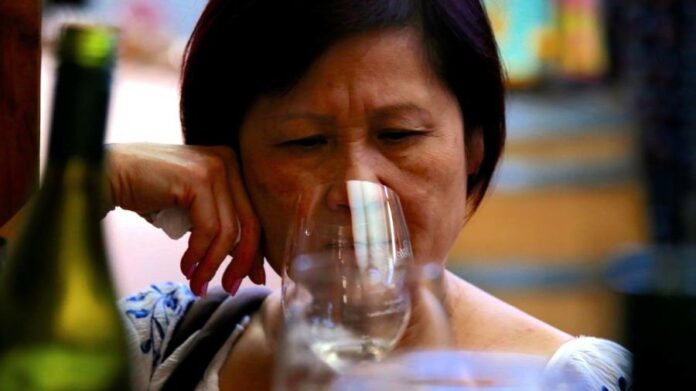Being on the receiving end of coercive trade bullying from China isn’t much fun for exporters. Beijing has multiple ways to let a trading partner know the folly of their inconvenient political views — including sudden new bureaucratic obstacles and conveniently-timed tariffs against allegedly dumped imports.
The most high-profile recent targets are Australia, after it called for an investigation into the origins of Covid in 2020, and Lithuania, which allowed Taiwan to open a “representative office” in Vilnius, its capital, in 2021. Using formal means such as tariffs and informal ones like ports simply turning away cargo ships, China severely restricted some of Australia’s main goods exports, including coal, wine and barley. Lithuania — and foreign companies linked to it by supply chains — suddenly found it almost impossible to get clearance for exports to China.
Canberra and Vilnius had two main options for responding. One was traditional trade policy: diplomatic manoeuvring, litigation, retaliation. The other was for their exporters to roll with the punch and find markets elsewhere. In recent months it’s become clear the latter has been so successful that the former seems almost an afterthought. A proverb cited by George Herbert, a 17th-century English poet, puts it neatly: living well is the best revenge.
In theory, Australia should have suffered heavily. Its commodities feed China’s factories and its wine and rock lobsters sustain Chinese consumers. But Australian exporters have found gaps in the trade barriers and new markets elsewhere. With few other sources of supply, China exempted Australian iron ore from the restrictions. Lobsters were smuggled through Hong Kong. Australian wine producers shifted their attention to the US market.
Australia did bring cases over tariffs on wine and barley against China to the World Trade Organization in 2021. It also signalled geopolitical autonomy by signing security pacts with the US and a trade deal with India. But those WTO cases are still unresolved, and Australian exporters have clearly won the diplomatic battle for their government in the meantime. Beijing has softened its aggression. In December, Penny Wong became the first Australian foreign minister for three years to make an official trip to China. By last month, it became clear that Australian coal was again being allowed through Chinese ports.
Beijing hasn’t done much better pushing around Lithuania, the small Baltic EU member state. The EU has pursued official channels on Lithuania’s behalf, giving it a loan and last year also opening a WTO case. But given the tiny amounts of trade involved, any proportionate retaliation will barely leave a mark on Chinese exports. The EU is also creating a potentially very powerful unilateral legal “anti-coercion instrument” allowing it to impose a broad range of retaliatory measures, but it isn’t yet in force.
In the meantime Lithuania, which had sold very little of the minerals, manufactured goods and chemicals it exports to China, has increased sales elsewhere. For a while it looked as if German companies locked into Lithuanian supply chains would pressure Vilnius to back down. But rather than become collateral damage, those businesses seem to have rejigged their supply networks and Lithuania retains a free hand on foreign policy.
Exports have been strong not just in the country’s traditional destinations such as Germany and the US, but also Indo-Pacific economies, including Taiwan (which has also helped out with loans and co-operation on semiconductor manufacture), Korea, Singapore and Australia, which opened a trade office in Vilnius in February.
Politically, far from being intimidated, Lithuania has been handed an excellent public relations opportunity. As the extent of its trade recovery and diversification became clearer last year — even before the EU’s WTO case had properly got going — the foreign ministry gleefully fired out volleys of enthusiastic missives about its new geoeconomic pals.
This is not to say that WTO litigation or other diplomatic action is pointless. EU officials, reasonably enough, say a case can establish precedent that even the murky forms of coercion China uses are subject to WTO rules. There’s an important principle at stake: EU institutions defending the rule of law. But litigation is more about setting rules for the future than forcing China to back down now.
Not every country can do what flexible advanced economies like Lithuania and Australia have managed. Countries whose companies have many operations in China or are themselves dependent on Chinese inward investment are more vulnerable to coercion. It’s much slower and more expensive to move factories than export customers.

But Canberra and Vilnius have shown that China is far from invincible. Beijing has lost propaganda battles at either end of the planet and might now be careful about starting more. The Mercator Institute for China Studies (Merics), a Berlin-based think-tank, produces an indicator of recorded Chinese economic coercion — many undoubtedly go unreported — which suggests they rose sharply in the years to 2019 but then dropped off as China adopted a more persuasive diplomatic tone, certainly in Europe.
For Chinese trading partners, the lessons are clear. By all means make diplomatic complaints and bring WTO cases against Beijing, but the first step is to find more reliable customers.






